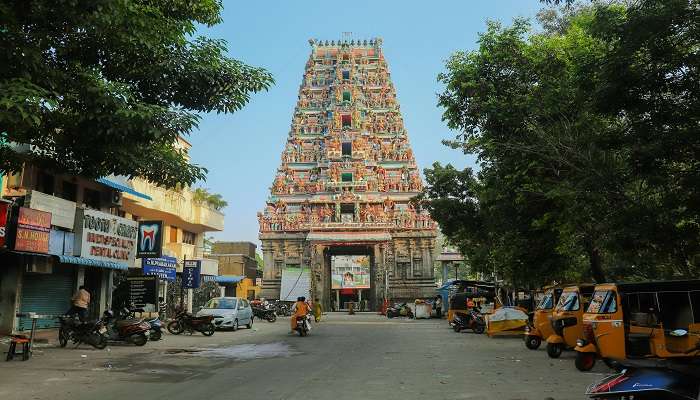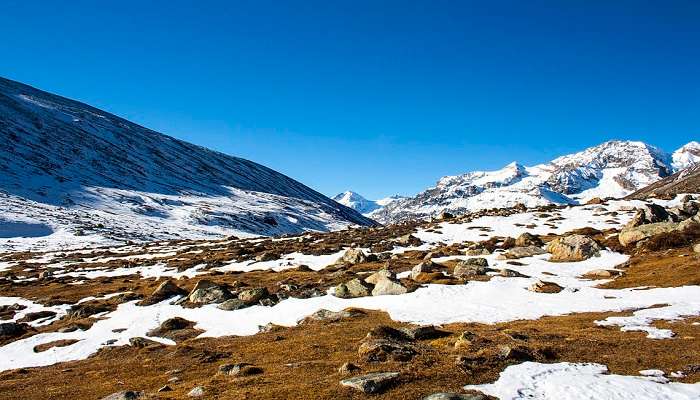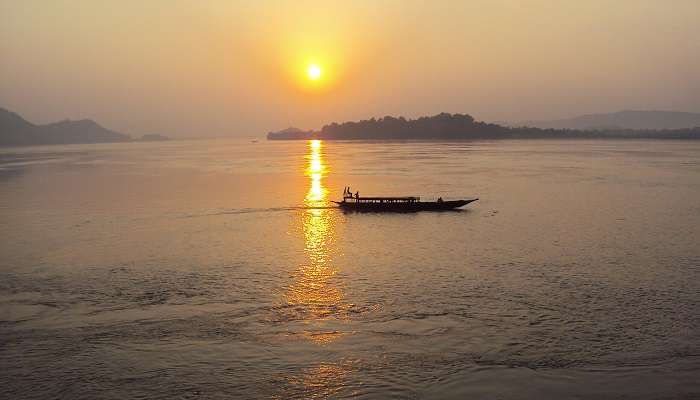Seetha Amman Temple Nuwara Eliya Is A Spiritual Journey
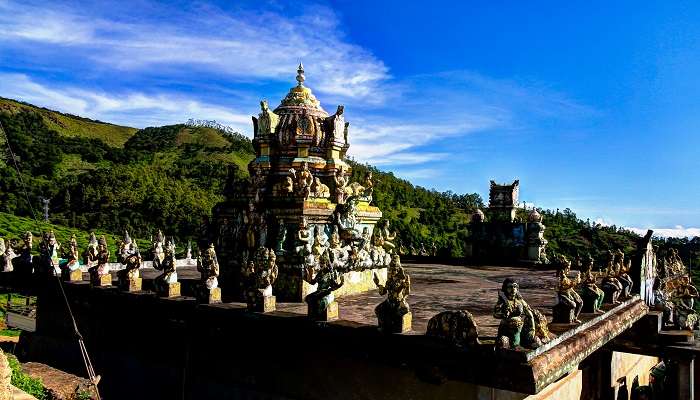
The Seetha Amman Temple Nuwara Eliya is the ultimate destination for all Hindu Pilgrims and tourists. This place is full of stories and cultural heritage as it hosted Princess Sita when she was captivated by King Ravana of Lanka. This is believed to be her final destination of imprisonment in the dense Ashoka Vatika. With scenic hills and picture-worthy beauty, immerse yourself in the trip to this temple on your visit to Sri Lanka. Besides religious exploration, the place also offers a variety of activities that we have listed out for you.
About Seetha Amman Temple Nuwara Eliya
Explore the Seetha Amman Temple with its elaborate architecture and fascinating historical context. Do not miss this wonderful piece of Sri Lankan heritage on your next trip.
Nuwara Eliya: What Can You Expect
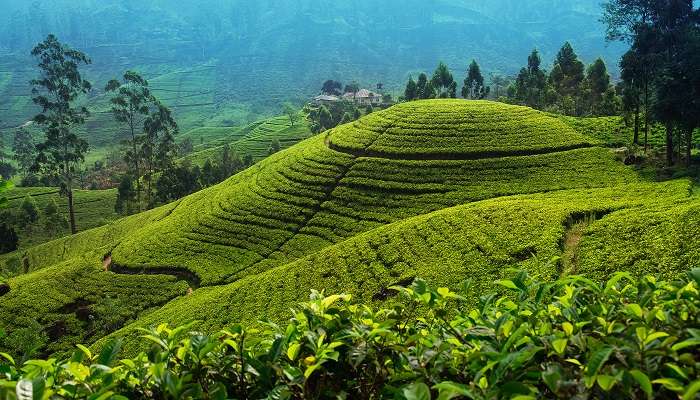
The city of Nuwara Eliya is a picturesque town in the central province of Sri Lanka. It serves as the country’s administrative capital. Proposedly, Nuwara Eliya has the coolest climate in Sri Lanka, which can be attributed to its location. It is located at a high altitude of 1,868 metres. This climate, along with fruitful soil, favours a variety of plantations, such as tea.
The name Nuwara Eliya means “city on the plain,” which reflects this landscape’s beauty in its name. The lush plantations cover the hillside and significantly contribute to the scenic beauty and monetary gains. One can enjoy travelling through the plantations and connect deeply with the environment around here. You will find that many of the buildings here reflect a British attribute that it acquired from the colonial period. A few examples are Queen’s Cottage, General’s House, Grand Hotel, and Town Post Office.
Must Read: Places To Visit In Nuwara Eliya
Legends Surrounding The Seetha Amman Temple
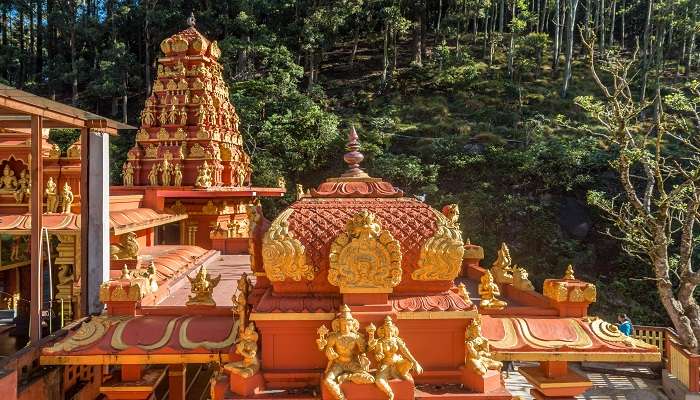
The Seetha Amman temple is indefinitely a testament to great cultural heritage and a site of prominent historical significance. In the bustling city of Nuwara Eliya, this temple is believed to be where Princess Sita was held captive by King Ravana, as depicted in the Hindu mythological scriptures of Ramayana. This is why this place is significant for tourists, not only as a place to visit but also as an important destination for all devotees and believers.
The Story Behind Seetha Amman Temple
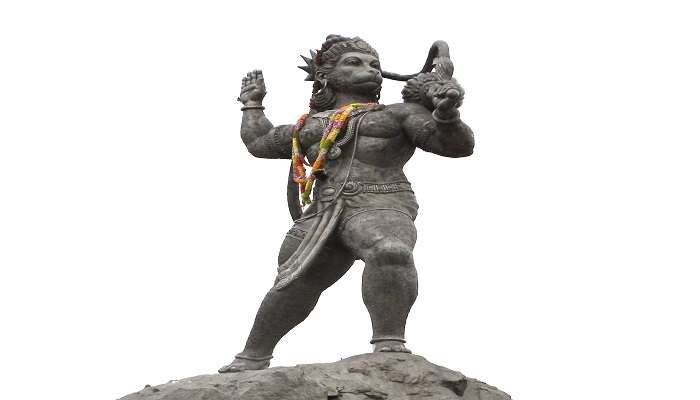
Devotees would like to know about this place’s cultural and spiritual significance. The epic story of Ramayana dictates how Ravana, the king of Lanka, captured Sita during their exile from Ayodhya and a succeeding rescue by her husband, Lord Rama, with the help of Lord Hanuman and his army of monkeys. The soil around this temple is all black in colour, which is believed to be because Lord Hanuman burned down Lanka with his tail (as depicted in Ramayana).
Surrounded by Ashoka trees, this place was also known as the Ashoka Vatika. It is believed that Sita would spend her time meditating and seeking shade and peace around these trees. Many sculptures and idols are buried near the river, which are believed to be of Sita herself. Furthermore, many foot impressions of giant elephants can be seen, which are believed to be the footprints of Ravana’s Royal Elephant. One unique aspect of the Seetha Amman Temple is that this is the only temple in Sri Lanka dedicated solely to worshipping Goddess Sita. This signifies the uniqueness of this temple, especially for all Hindu devotees and pilgrims from all over the world.
Suggested Read: Things To Do In Sri Lanka
Seetha Amman Temple Today
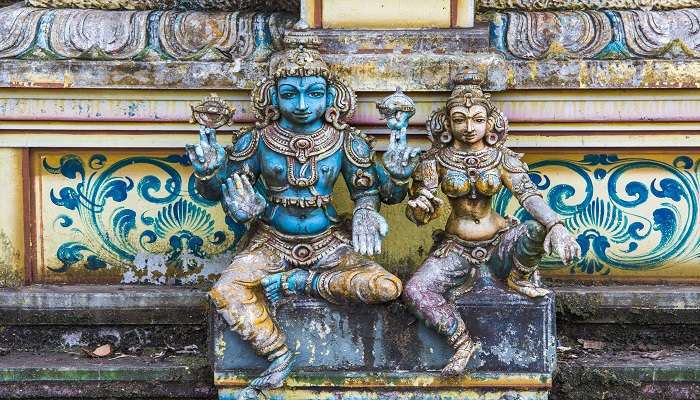
Seetha Amman temple is located by the side of a beautiful stream called The Seeta River, where Princess Sita used to bathe and pray. While this temple honours the deities Rama, Sita, Laxmana, and Hanuman, it is noteworthy that many big and small footprints can be found near the stream, which connects with the mythological lore of them being that of Lord Hanuman.
While Hindus primarily worship lords Rama, Laxmana, Hanuman, and Sita, this place is open to people worldwide who believe in all religions and have no entrance fees. However, certain things like a decent dress code, polite behaviour and timing must be considered. Tourists in Sri Lanka should visit the temple and appreciate its architectural beauty. The intricate carvings, sculptures and the grand entrance effortlessly portray the beauty of this temple. All of this, combined with a peaceful, transcendence-inducing atmosphere, allows one to truly introspect and get engrossed in the divinity of the temple.
Entrance To The Temple
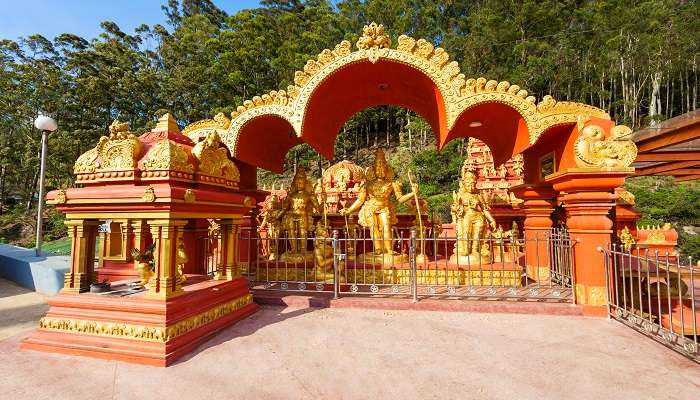
The timings for temple visits start early in the morning (depending upon the sunrise) until evening. Additionally, it remains closed for one hour during the afternoon. Temple pooja is from 8 AM to 1 PM and 2 PM to 6:30 PM. However, it is advisable to check the specific temple timings before planning your visit, as they may be subject to change or vary during festivals and special occasions.
The temple is 2 km from Hagkala Botanical Gardens and 4 km from the Nuwara Eliya bus stand. You can take a train, bus, or taxi to it. However, it is suggested that you check the timings before visiting the temple to avoid encountering a closed temple.
Suggested Read: Festivals In Sri Lanka
Other Activities In Nuwara Eliya

Various activities can be enjoyed by visitors to Nuwara Eliya. These activities will definitely give you a lifetime experience. Here is the list of activities;
1. Tea Estates: Tourists can pass by the Tea Estates and learn more about the production and processing of tea leaves. Many estates offer a guided tour to make this process less cumbersome and more informative and delightful. Tea Estates like “Pedro Tea Estate” is one such that will take you through the entire process of tea production and elaborate it for you from a simple leaf to your cup. This will undoubtedly be a great experience for you.
2. Botanical Gardens And Parks: The famous Hakgala Botanical Garden and Victoria Park will immerse you in the intriguing flora, especially the infamous rose garden. Victoria Park is well known for its high upkeep and beautiful capture for bird watchers.
3. Explore Waterfalls: A scenic waterfall known as “the Lover’s Leap” is a main attraction. It recites a tragic tale of a royal prince and a local village girl who leapt from the fall when forbidden to marry the love of her life. However, the story does not have a strong historical basis, and the place is magnificently attractive. Another spectacular waterfall is “Ramboda Falls”, a multi-tier waterfall ideal for aesthetic pictures and a relaxing time.
4. Traditional cuisines: The best food in Sri Lanka can be enjoyed in local restaurants and street foods. Some dishes you can try are- Kottu roti, fresh seafood, samosas, vada and juices.
Further Read: Sri Dala Maligawa In Sri Lanka
Now that you have all the necessary knowledge of the temple visit the Seetha Amman Temple Nuwara Eliya on your trip to Sri Lanka to experience spirituality, serenity, and tranquillity. Accompanied by your loved ones, this experience will be more rewarding.
For our editorial codes of conduct and copyright disclaimer, please click here
Cover Image Source: Shutterstock
Frequently Asked Questions About Seetha Amman Temple Nuwara Eliya
What is the temple Dress code?
it is expected that you wear decent clothes that are below the knee length and cover all parts of your body. Colours like black should be avoided. Apart from this, all sorts of clothes can be worn.
What are the temple timings?
Temple pooja timings are from 8 AM to 1 PM and 2 PM to 6:30 PM.
What is the entry fee for the temple?
The temple is open to everyone. Therefore entry into the temple is free. However, if you wish to do pooja, you can buy flowers and sweets from shops outside the temple and buy a ticket (100 to 200 Sri Lankan rupees) for the services.
Nuwara Eliya to Seetha Amman temple distance.
It takes approximately 7 to 10 minutes by car (3.6 km) to travel from Nuwara Eliya to Seetha Amman Temple.
Can I take photos inside the temple?
No. taking photos inside the temple is prohibited, visitors can click pictures outside the temple.
People Also Read:
Ettumanoor Mahadev Temple Jambukeswara Temple Kartik Swami Temple

With a passion for exploring and travelling to the roads long forgotten, experience the world through enthralling stories and adventures. Join me as I share my experiences at some of the world’s most popular tourist destinations and quench that pestering curiosity with something exciting!



